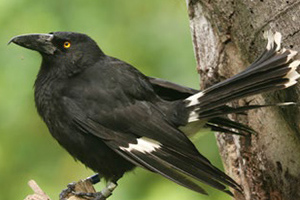Sustainability
- Home
- Locations
- What you can do
- LiFE Framework
- Sustainable Development Goals
- About us
- Grants
- Events
- Contact us
Now searching for:

Charles Sturt University researchers working on world-heritage listed Lord Howe Island have investigated the impact of an island-wide rodent eradication program. The program was introduced because rodents had reached huge numbers and were killing native birds and wildlife and ravaging crops and gardens. Researchers, Richard Segal, Rachel Whitsed, Nicholas Carlile and Melanie Massaro, conducted studies into the program’s effects on native birds, in particular, the Lord Howe currawong. To mitigate these birds being poisoned during baiting, 30-40 per cent of the population were taken into captivity during operations, while the remaining were left in the wild. Researchers studied currawong survival, nesting density and breeding success pre-and post-eradication to test how the baiting, a period in captivity, and the removal of rodents affected them.
Post-eradication, results showed that many currawongs left in the wild disappeared during baiting and nesting densities were significantly lower. These currawongs likely died of poisoning as they were not resighted for two years. The captive management of currawongs diminished the adverse effects of baiting, with those surviving showing higher success of breeding.
Find out more about
Rodent eradication program